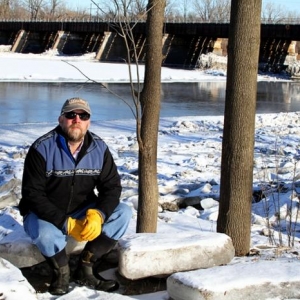Collaborative Research: Understanding the Provenance and Thermal Evolution of the Chugach Prince William Terrane in Southern Alaska
The National Science Foundation
Division of Earth Sciences, Tectonics Program
Award Amount: $231,779 | Effective Dates: 06/15/2011 – 05/31/2015 | Award ID: EAR-1116554
Project Personnel: Principal Investigator John Garver (Geology)
Project Summary: The Chugach-Prince William terrane is an extensive accretionary complex that formed along the western margin of North America during subduction (under-thrusting) of oceanic lithosphere in the Cretaceous to Eocene. It was intruded by near-trench igneous rocks inferred to be related to the subduction of an oceanic ridge (where new ocean crust is formed), but the location of this terrane at the time of ridge interaction is under considerable debate. There are two prevailing hypotheses for its position at the time of formation: 1) The Chugach-Prince William terrane formed more or less in place and ridge interaction was related to the now - subducted Resurrection plate; or 2) the Chugach-Prince William terrane formed far to the south, was intruded by near-trench igneous rocks near a latitude of 48-49°N, and was subsequently translated along the continental margin to Alaska by strike slip faults similar to the San Andreas fault in California. The possible formation of the Chugach-Prince William terrane far to the south and subsequent translation along the continental margin is a defining event in western North American tectonics and makes testable predictions for the origin and thermal evolution of these rocks. We use geochronology, stratigraphy, petrology, structural geology, and geophysics to unravel the source region of this accretionary complex and subsequent thermal history. Together, these data are yielding important constraints on the accretion and translation history of the Chugach-Prince William terrane and has implications for the history of flanking basins such as the hydrocarbon-rich Cook Inlet basin. This research directly addresses several key problems in North American tectonics related to terrane formation, translation, accretion, and basin formation, and is helping advance geochronologic methods used for tracking the origin and thermal evolution of sedimentary rocks. The results from this work are providing a better tectonic framework for understanding the timing and nature of basin formation (including hydrocarbon-rich strata), and the timing and extent of precious metals deposits (gold) associated with intrusive rocks. This project also has a strong educational component aimed at increasing the number of students in the geoscience pipeline and ultimately the workforce, and our effort is partly focused on recruiting students under-represented in the Geosciences.
College Grants & Sponsored Programs
NSF Grant Supports Thermal Evolution
LEARN MORE ABOUT:
17 South Lane, 2nd Floor
View in Google Maps
Theresa Polson
Associate Director of College Grants and Sponsored Programs
(518) 388-6169
polsont@union.edu
Mercedes Susi
Director of College Grants and Sponsored Programs
(518) 388-6984
susim@union.edu
